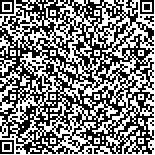| 引用本文: | 张天文,郭文,荆圆圆,刘恩孚,胡凡光,王树刚,刘广斌.东营河口浅海贝类生态国家级海洋特别保护区大型底栖动物的群落结构特征[J].海洋科学,2021,45(3):1-13. |
| |
|
| |
|
|
| 本文已被:浏览 1148次 下载 1193次 |

码上扫一扫! |
|
|
| 东营河口浅海贝类生态国家级海洋特别保护区大型底栖动物的群落结构特征 |
|
张天文1,2,3, 郭文1,2,3, 荆圆圆1,2,3, 刘恩孚1,2,3, 胡凡光1,2,3, 王树刚4, 刘广斌1,2,3
|
|
1.山东省海洋生物研究院, 山东 青岛 266104;2.山东省海水健康养殖工程技术创新示范平台, 山东 青岛 266104;3.山东省海水养殖病害防治重点实验室, 山东 青岛 266104;4.东营市河口区海洋发展和渔业局, 山东 东营 257200
|
|
| 摘要: |
| 为了解东营河口浅海贝类生态国家级海洋特别保护区中大型底栖动物的群落结构及分布特征,于2019年对保护区内大型底栖动物进行了春、夏、秋、冬4个季度的详细调查,研究结果为:共采集大型底栖动物73种,优势种类为:彩虹明樱蛤(Moerella iridescens)、四角蛤蜊(Mactra veneriformis)、寡节甘吻沙蚕(Glycinde gurjanovae)、三叶针尾涟虫(Diastylis tricincta)、光滑河篮蛤(Potamocorbula laevis)、极地蚤钩虾(Pontocrates altamarimus)和马丁海稚虫(Spio martinensis)。大型底栖动物的年平均丰度为166 ind/m2,年平均生物量为14.30 g/m2,Shannon-Wiener多样性指数(H')平均值为2.14。聚类分析结果为调查区域的大型底栖动物分为两组群落(近岸区和远岸区),近岸区域形成以光滑河篮蛤和四角蛤蜊为主的群落,远岸区域形成以彩虹明樱蛤-寡节甘吻沙蚕为优势种类的群落,两者表现出不同的群落特征。ABC曲线分析表明,保护区内的生物群落结构比较稳定,从生态容量上来看,贝类资源目前仍还有一定的增殖及保护空间。 |
| 关键词: 海洋保护区 大型底栖动物 双壳纲贝类 群落结构 |
| DOI:10.11759/hykx20200520002 |
| 分类号:P735 |
| 基金项目:山东省现代农业产业技术体系(SDAIT-14);“海生·河口”渔业科技提升工程 |
|
| Characteristics of macrobenthos assemblages in National Special Marine Protected Area at Dongying Estuary Shallow Sea Shellfish Ecology |
|
ZHANG Tian-wen1,2,3, GUO Wen1,2,3, JING Yuan-yuan1,2,3, LIU En-fu1,2,3, HU Fan-guang1,2,3, WANG Shu-gang4, LIU Guang-bin1,2,3
|
|
1.Marine Biology Institute of Shandong Province, Qingdao, Shandong 266104, China;2.Shandong Provincial Healthy Mariculture Engineering Innovation Demonstration Platform, Qingdao, Shandong 266104, China;3.Shandong Key Laboratory of Disease Control in Mariculture, Qingdao, Shandong 266104, China;4.Bureau of Marine Development and Fisheries of Hekou District, Dongying, Shandong 257200, China
|
| Abstract: |
| In order to understand the macrobenthos community structure and spatial distribution in the National Special Marine Protected Area at Dongying Estuary Shallow Sea Shellfish Ecology, surveys were conducted in February (winter), May (spring), August (summer), and November (autumn) 2019. A total of 73 macrobenthic species were identified in the protected area. The dominant species in the study area include Moerella iridescens, Mactra veneriformis, Glycinde gurjanovae, Diastylis tricincta, Potamocorbula laevis, Pontocrates altamarimusa, and Spio martinensis. The annual mean abundance of macrobenthos in the protected area was 166 ind/m2, while the biomass was 14.30 g/m2. The Shannon-Wiener diversity index (H') had a mean value of 2.14. The hierarchical clustering between group linkages revealed that the macrobenthos community could be classified as near shore and off shore groups, both of which are closely related to the geographical position. The dominant species were Potamocorbula laevis and Mactra veneriformis in the near coast groups, and were Moerella iridescens and Glycinde gurjanovae in off shore groups. There were different community characteristics in the two groups. ABC curve analysis revealed that the macrobenthic community structure was relatively stable. There is a potential enhancement of the space for proliferation, as well as protection of shellfish resources from the ecological capacity perspective. |
| Key words: marine protected areas Macrobenthos Bivalvia community characteristics |
|
|
|
|
|
|
